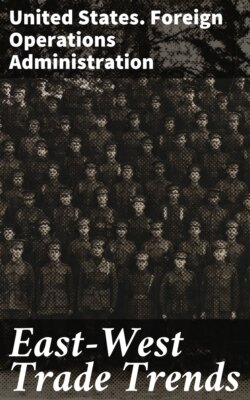Читать книгу East-West Trade Trends - United States. Foreign Operations Administration - Страница 4
CHAPTER I
ОглавлениеStalin’s Lopsided Economy
The weakest link of the socialist chain is merchandising and distribution; if this can be strengthened, present difficulties will be overcome. Upon it the Kremlin has wisely concentrated attention. The Kremlin’s immediate objective, as recently announced by the resolutions voted at the plenary session of Bolshevik leaders, is to increase the supply of foodstuffs and consumers’ goods and stimulate their mutual exchange.
That quotation is from a Moscow dispatch to the New York Times. The dispatch was written by Walter Duranty and printed on November 6, 1932.
As long ago as that, and even before, the Russian people were wondering when something was going to be done about the supply of food and other things they needed, and the dictatorship was making motions—but not very helpful—in that direction. Goals were set and decrees were issued. But the results were disappointing, and the standards of living of the Russian people stayed low.
Stalin’s First Five-Year Plan called for a 50 percent rise in gross farm production during 1928-32 inclusive. But by 1932, farm production had declined by 20 percent. The difficulties have continued ever since. For example, the Third Five-Year Plan, beginning with 1938, was scheduled to bring a large increase in consumer goods—larger than the increase being promised nowadays—but instead the supply of consumer goods actually decreased, even in the three prewar years of the period. Per capita consumption in the Soviet Union is lower now than it was in the 1920’s, before the 5-year plans commenced.
